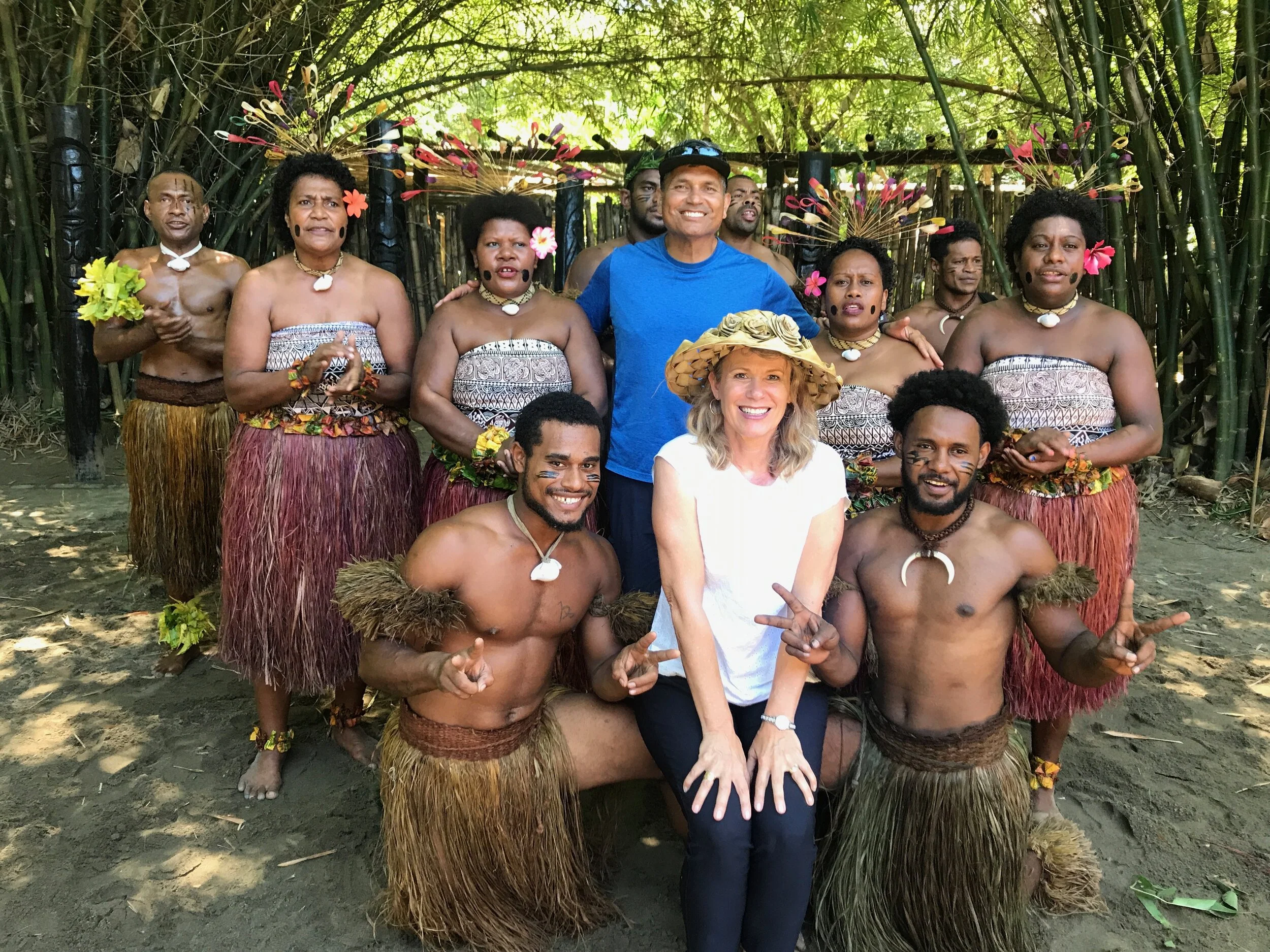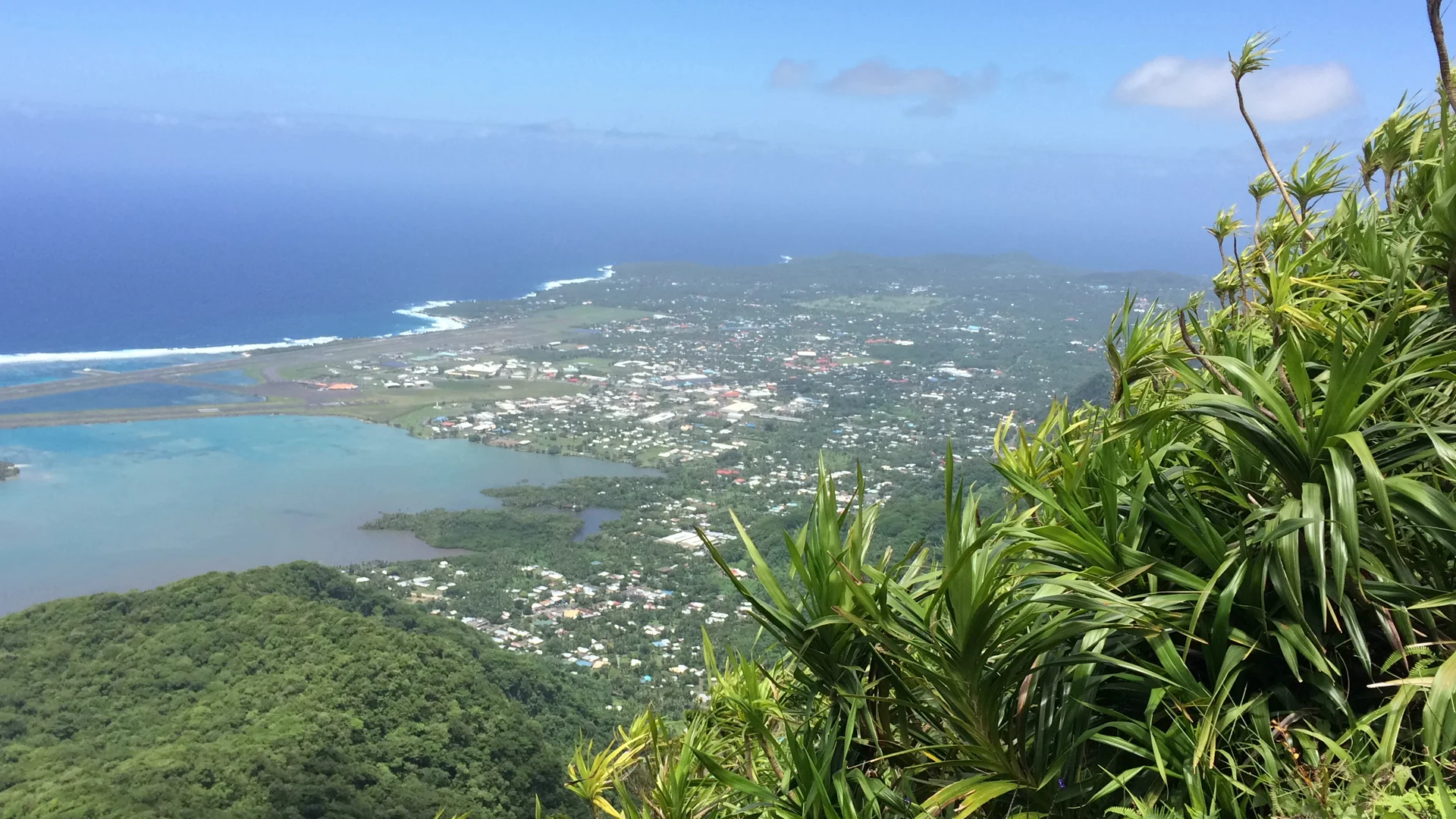Panesi Afualo was the lead musician for the Islanders back in the day! He was an amazing guitarist and lead vocalist, wrote and arranged songs for us, and accompanied all of the dances with live music. He was a masterful emcee who always had guests roaring with laughter. He was a self-taught guitarist who started his musical career with a garage band in Santa Ana California, back in the 60’s. He went to BYU-Hawaii where he played volleyball and was voted MVP of the National Championship Tournament. To make ends meet, he worked at the Polynesian Cultural Center where he became the lead musician for the their famous night show. After graduation his sister, Susiana, hired him as the lead musician for her Islanders show, which kept him busy for the next 30 years. When we realized that customer's often didn't have the budget for a full band, he recorded all of the parts for his music, part by part, into his synthesizer, and he became a one-man band. Our kids affectionately called it the Pan Band. Panesi trained his children musically and often brought them along to back him up. He was diagnosed with thyroid cancer, but continued performing for us for another 14 years while he battled the cancer. His last show was only a few weeks before he passed in the summer of 2015. He is a legend in our family and in our business.
As detailed in previous (see below) blog posts about the children of Luteru and Siasaga Afualo, their children used their talents to perform across Southern California beginning in the 70s. The music played at the shows was a mix of old-time island favorites and music they wrote themselves. The original set-up was done majoritively by the family with Panesi Afualo as lead singer & guitartist, harmony by Sone Afualo and on bass, with Tomasina on the drums, Susiana as vocals and ukulele. Other siblings and their own children were equally called upon to step in by playing the keyboard, the pake drum or perhaps pick up a ukulele.
"Chief Luteru" the owner and CEO of Islanders Luau, officially became a Matai, or Chief, in 2006, in his grandfather's small village of Tufutafoe, Savaii, Samoa, with the traditional Saofa'i Ava Ceremony. (Ava is the Samoan word for Kava, which is Tongan and is much more commonly used.) The official title given to Maril by the village elders, is “Chief Afualo Luteru”.
Read the captions accompanying the below pictures for details of this incredible experience in Maril's life.
The village chiefs
The village of Tufutafoe was where Maril's grandfather was born in 1905. All of the people in the village are Afualos. These are some of the distant relatives that serve on the village council who were invited inside the fale, for the ceremony. They were completely comfortable sitting cross-legged on the mats for the lengthy ceremony.
Uncle Nesi
Susiana’s Uncle Nesi has lived in the tiny village of Tufutafoe, Samoa, his whole life. Nesi is one of the village high chiefs. He looks just like Maril's Uncle Sone, who used to be the base player for the Islanders band in the 1970's and 80's.
The 'Ava Stick
The taulealea presents Maril with his kava stick. Each chief or matai of the village is presented with the prospective chief’s kava stick during the ceremony.
The kava bowl
The Tufutafoe village kava bowl was much simpler than the fancy kava bowls which are sold to tourists at the market in Apia, Samoa.
This boy, a tualealea, is scooping the kava drink out with a coconut shell for each of the village elders to take a sip. The rest of the village sat around the outside of the Fale tele, to respectfully observe the lengthy ceremony.
Chief Afualo Luteru
The ceremony was a meaningful, humbling experience for Maril as he became one of the village chiefs.
Once in a lifetime
After the Kava stick was presented to Maril, a tea was made of the kava and each of the chief's took a sip of it from a coconut shell. Susiana was sitting next to her son, Maril, proud that he would now represent her family here in California.
“Susiana and the Islanders” would have never made it to Southern California without the great faith of this man, Luteru Afualo. He was born on the largest Samoan island of Savaii in the early 1900’s. Someone encouraged Luteru to go to the island of Upolu to attend the LDS Church school in Sauniatu. While there he met Siasaga Naea, who told him she wouldn’t marry him if he wasn’t a member of the LDS church. He promptly converted. After finishing school, they were called on a lifelong mission for the church. Luteru would travel to small villages, and ask the chief of the village if they could start a church there. The chief would give them a small plot of jungle land to farm. They would clear the dense vegetation and build a fale, or grass shack, and farm the land by day, and do missionary work by night. Once the church was established in a village, they would move on to a new village and start over again. Susiana remembers that they would put all of their belongings on handwoven mats and the family would carry or drag the mats to their new land in a new village.
Luteru and Siasaga had 10 children, 8 of whom grew to adulthood. All of the children were born in different villages on two different Samoan islands. They all have interesting names that have to do with their parents’ faith.
Opapo--Born in Sauniatu, Western Samoa, named after the man who converted Luteru, Opapo Fonoimoana.
Elesiva--Also, born in Sauniatu, called Siva--appropriate for her lively personality. Siva means dance.
Pago Pago--Born in Pago Pago, American Samoa, where the family moved to proselyte.
Uatisone--(Pronounced Watasony) Born in Tula, American Samoa, the first of the boys to be named after an American missionary, Elder Watson.
Laile--Born in Sauniatu, Samoa, the headquarters of the church in Samoa. Named after a church leader named Lyle.
Susiana--Born in Lauli'i, Western Samoa. Susiana is not a traditional Samoan name, but the Samoan version of Susan or Suzann, possibly the name of an American church leader’s child.
Penina--Born in Eva, Western Samoa. Named after her beloved older sister who had recently passed away.
Panesi--Born in Mesepa, American Samoa. Named after an Elder Barnes. Panesi means barn.
The boys all learned to work hard by fishing and farming. Susiana’s job was to go to the villages to sell the fish and produce. She learned to be a very good salesman as a young child, because she would get in trouble (sa sa) if she came home with unsold items. Things were different back then.
The children didn’t have toys other than a cricket bat and ball. Susiana said that some of the activities that the children enjoyed were singing, dancing, and spinning a stick like a fire-knife dancer. (She is the one who taught her son, Maril, the basics of firedancing at the age of 5 years old. Who would have ever guessed he would use that skill almost every weekend for the next 50 years?) Susiana’s mother had learned to play a pump organ in the 1920’s at the LDS school in Sauniatu, and she taught all of her children to play. All of the kids remember that she had a metronome, and if they missed a beat during their lessons, they would get rapped on the knuckles with a ruler. The family was well-known for their musical talents.
Luteru's wife, Siasaga, died of TB after her youngest son was born. Luteru wanted his family to go the Mormon temple in Laia, Hawaii, so the family came up with a plan. First Pago got accepted into a military school in Hawaii--which was still not a state--just an American Territory. Then the other boys, Opapo, Uatesone, and Laile joined the military to allow them to immigrate to Hawaii as well. Once they were there, then Luteru was able to come and one by one, the other children were able to join them--Elesiva, Susiana, Penina, and little Panesi.
Luteru’s mission then changed to that of a labor missionary, where he worked to build the LDS Church College of Hawaii in Laia, now BYU-Hawaii. While in Laia, the handsome Afualo brothers were well known for their singing talent, often singing songs by the Lettermen, with beautiful harmony. While in Hawaii Susiana observed that entertainment didn’t have to be just for fun--it could be a viable business.
All of the children soon migrated to the US mainland, and by the time Susiana was 25, she was dancing at luaus in California. Before she was 30, she started “Susiana and the Islanders”, now known as “Islanders Luau”. She enlisted many of her siblings into the first Islanders band. Sone on bass guitar, Panesi on lead guitar, Peni on ukulele and tamborine, and Susiana on ukulele. Panesi was the lead singer and all of the siblings sang backup and an occasional solo.
Luteru passed away in Laia, HI in 1960 on the day that he was released from his lifelong church mission. He was walking with his son, Sone, when he peacefully collapsed with his missionary release papers still in his hand. All of the children and grandchildren enjoy the faithful legacy of Luteru and Siasaga, who richly blessed their posterity.
*Side note: If anyone knows of any LDS missionaries who served in Samoa from 1930 to 1950, who have photographs of their missions, please let us know! We don’t have any pictures of Luteru’s wife, Susiana’s mother, Siasaga Naea. We know she must be in a lot of photos that American missionaries took, back in the day. Also, if anyone knows of any corrections or additions to this blog, please comment!
We only know of three photos of Luteru. This first one is from the Church College of Hawaii’s Yearbook in the 1950s. The second one is at a wedding in 1958, with 4 of his children--Opapo, Pago, Susiana, and Panesi, and the next picture must have been taken in Hawaii. He is holding a traditional Samoan fan. The last picture is of his grave which his great-granddaughter tends to weekly, in Laie, HI.

















